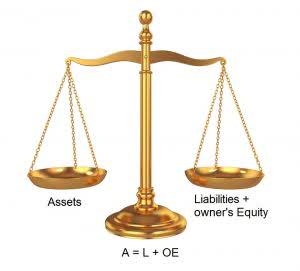EBIT: Meaning, Formula, and Comparison to EBITDA
.jpg)
While net Income gives the final bottom-line profitability of a company after all expenses, EBIT aims to isolate just the operating profitability. So it deducts from revenues only those expenses tied directly to operating the business, such as cost of goods sold, R&D costs, selling and marketing expenses, etc. It excludes expenses below the operating profit line, like interest and taxes. Enterprise Value (EV) to EBIT is a popular valuation metric used by analysts and investors. Dividing it by EBIT derives a valuation multiple similar to P/E but with advantages.
Helps Investors Or Analysts Compare Companies In Similar Industry
Operating expenses can include items such as rent, utilities, employee salaries, and other day-to-day expenses that are required to keep the business running. For this reason, most resources on the matter do not make that distinction although it is important to understand that they are two different measures of profitability. In this example, Ron’s company earned a profit of $90,000 for the year.
Analysis and Interpretation
.jpg)
In sectors or companies where certain expenses are particularly high or low, EBIT may not tell the whole earnings story. As you may expect, these limitations are centered on the fact that EBIT takes into account the impact of depreciation and amortization, but not capital structure or tax. EBIT information is found on a company’s income statement, alongside all its earnings, which are published quarterly and annually.
- The main difference is that EBITDA is calculated before depreciation and amortization expenses.
- It’s a key performance indicator (KPI) that provides insight into a company’s financial health, operational efficiency, and potential for sustainable growth.
- EBIT may include non-operating income, such as gains from investments, whereas operating income strictly focuses on earnings from core operations.
- So, if a company doesn’t earn anything other than from its core business, operating profit and EBIT will be the same.
- EBIT, or operating profit, measures the profit generated by a company’s operations.
- But the firm said that net interest income, one of the most watched figures for the lender, rose 3% to $14.5 billion, exceeding estimates by about $170 million.
Advantages and Disadvantages of EBIT
This means it doesn’t adhere to the standardized accounting rules and guidelines that ensure consistency and comparability in financial reporting. If there’s negative cash flow, there are likely earnings before interest and taxes many issues that need to be addressed. But if there’s positive cash flow, managers should have a pretty good idea of profitability. This gives them a guide to earnings and other key factors within a company. EBIT can also help analysts see strategic activities to offer guidance and direction.
Advanced EBIT Insights: Case Studies and Industry Applications
Some advantages include that it is a good indicator of how well a company is doing compared to its competitors and that it is a good indicator of operating efficiency. It is calculated by adding interest and tax expenses back to net income. Having a large number of fixed assets may give a company a lower present-day valuation compared to another company because of the depreciated value of fixed assets. From both examples we had above, we can see non-operating items (proceeds from sale of asset, lawsuit expenses, and other expenses) that need to be accounted for. To calculate EBIT using the indirect method, we add income tax expense, and interest expense to the net income.
What is the formula for EBIT?
- Examining the operations in this way helps investors understand a company’s health and ability to pay it debt obligations.
- This core operating cash flow is available to reinvest or return to shareholders through dividends and buybacks.
- While net Income gives the final bottom-line profitability of a company after all expenses, EBIT aims to isolate just the operating profitability.
- Financial statements that do include it typically subtotal and calculate the earnings before interest and taxes right before non-operating expenses are listed.
- Depreciation saves a company from recording the cost of the asset in the year the asset was purchased.
- If the company extends credit to its customers as an integral part of its business, then this interest income is a component of operating income, and a company will always include it.
The above examples show the use of formula EBIT earnings before interest and taxes`and method of calculation of EBIT in details. The examples clearly points out step by step how to identify the items from the financial statements and evaluate the profitability by using both direct and indirect method. EBIT is also assessed in the context of return on assets to evaluate capital efficiency. A company with a lower EBIT margin but higher EBIT relative to assets could actually be more effectively utilizing its operating assets to generate profits. EBIT provides for apples-to-apples comparisons between firms with differing capital structures, tax rates, accounting standards, and unusual items.
How to measure profitability using the EBIT margin
Operating earnings allow you to strip away the effects of financing and tax decisions, focusing purely on operational performance. The main limitation of EBIT is that it’s not presented on a GAAP compliant income statement, so it is not as easy to identify and compare EBIT for multiple companies. Gross profit, operating profit, and net income are all GAAP approved profit measures that commonly appear on the income statement. These figures would be easier to identify and compare across multiple companies– or for a year-over-year analysis to identify trends within one company.




.jpeg)
.jpeg)